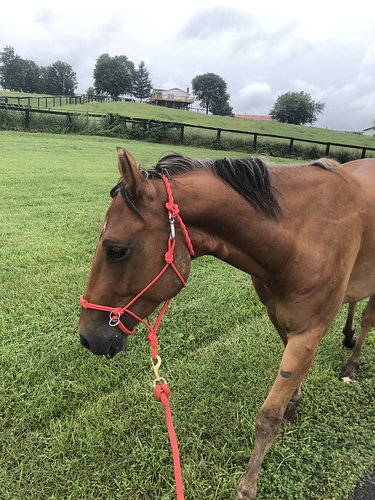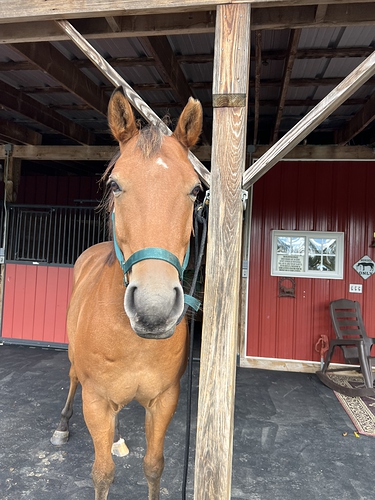Since starting the other KS spin-off thread I’ve been really paying attention to the horses’ faces and expressions. Yes, mostly I’ve been focusing on my ulcer/KS/attitude issue Problem Child, but I’m also comparing him to the others. I’d love to hear thoughts and opinions or experiences with “pain face” vs “normal range of horse expressions”. Some horses I think just have the “worried” look to them, but I’m still trying to discern what’s normal and what’s a sign to look closer.
For example, I’ve noticed that with the exception of when he’s getting bodywork done, Problem Child NEVER has a droopy lip, always a firm/tight nostril, lips always firmly pressed together, always a little peak/wrinkle to the top of his eye. I’m not exactly sure I put too much stock in the “tension lines” some people point out on the face, but he definitely has some lines running from his eye down to his nostril.
In comparison, for example my jumper always had a big, sleepy eye and droopy lip. He was just a big laid back teddy bear by nature. I FEEL as if Problem Child used to be pretty chill and relaxed, and while I wouldn’t call him hot or spooky, he’s definitely not “chill” and certainly has a lot of anger/anxiety in there.
What do y’all think about “pain face”? What is pain face to you, and when does it indicate you may need to pay closer attention vs try not to get dragged into the Woo Woo Keyboard Warrior Brigade?




 .
. 
 lol
lol